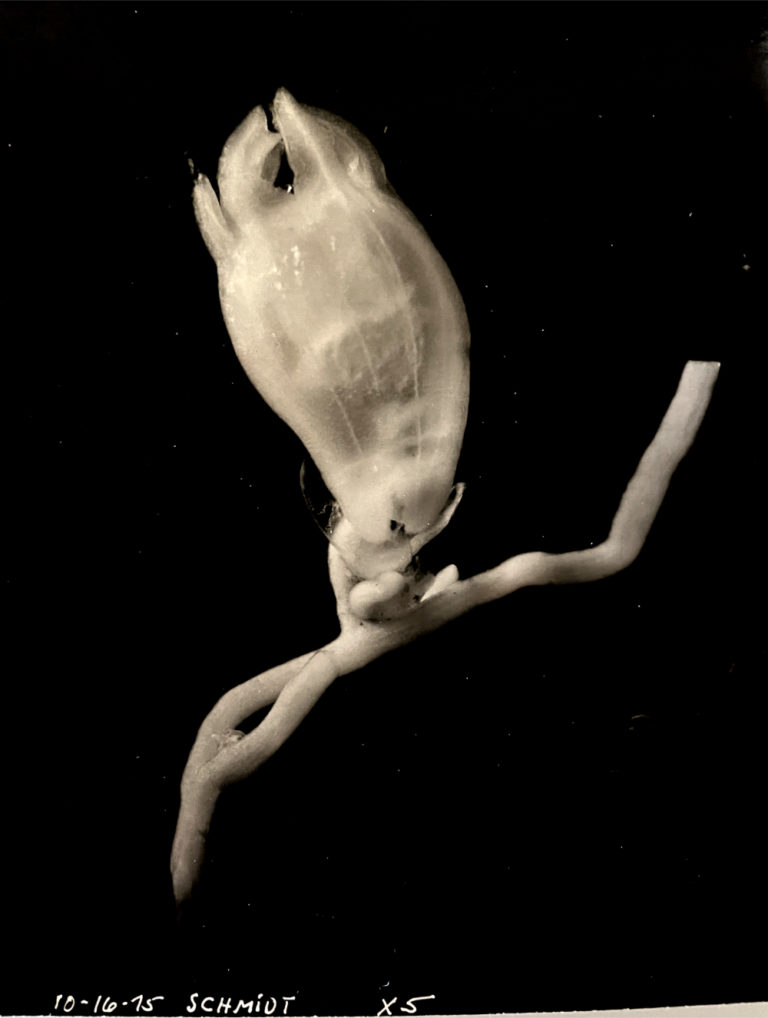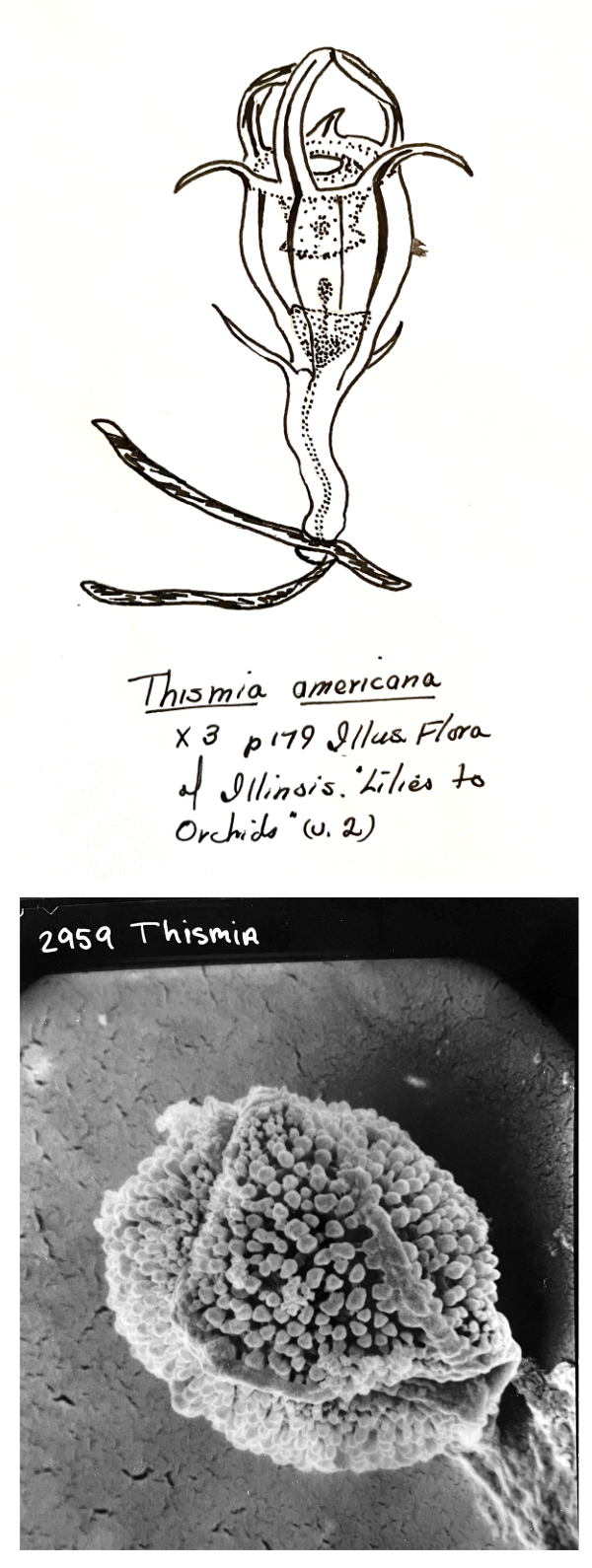Beginning in the early 1970s Prof. Rudolf Schmid (University of California, Berkeley) studied the genus Thismia (Thismia americana specimens from Chicago and T. rodwayi from New Zealand). He took these images, and presented a talk at the AIBS meeting entitled: Floral anatomy of Thismia americana and T. roadway (Burmanniaceae) 30 May—4 June 1976, New Orleans, LA.
Below is the abstract from his talk.
Prof Schmid also reported on Thismia in this publication: Schmid, R. 1976. Filament histology and anther dehiscence. Bot. J. Linn. Soc, 73: 303-315. This publication is available here.

Schmid, Rudolf. 1976. Floral anatomy of Thismia americana and T. rodwayi (Burmanniaceae). Bot. Soc. Amer., abstracts of papers. Tulane University, New Orleans, 30 May – 4 June 1976, p. 48 May-June [May-June 1976 AIBS meetings, New Orleans, Louisiana.]
Thismia is a mainly tropical South American-Indomalaysian genus of holosaprophytes. Pfeiffer in 1914 described T. americana as a new species from a prairie by Chicago. The plant has not been collected since 1917 despite searching by many botanists. Its closest relative is T. rodwayi, a very rare sylvan plant of Victoria, Tasmania and New Zealand—the only other species in section Rodwayi (Jonker, 1938). Thorne (1972) regarded this as “the most anomalous disjunction of all” plants. The two species—the only extra tropical Thismias—are very similar in floral anatomy and morphology, and also vegetatively. Flowers lack sclerenchyma, tannins, secretory structures, an endothelium, stomata, and trichomes (except on anthers). Both species have an endodermis in the peduncle, a negligible cuticle, phloic placental strands, chiefly endarch collateral bundles, but mesarch amphicribral strands in tepal tips and stamens, tracheary elements with only helical and commonly annular wall patterns, similar trinucleate pollen, long funicular, avascular ovules, and moderate amounts of raphides. The floral vascular of the two species is nearly identical; that of T. americana in turn is virtually indistinguishable from that described by Rao (1969) for the tropical T. aseroe) (section Euthismia). Jonker could find only one ontogenetic difference between T. americana and T. rodwayi (anther truncate at apex vs. anther with two lateral teeth and a median appendage); he thus surmised that perhaps these species are identical. There are, however, many other subtle, but significant, differences between the two species involving mainly flowers (color, inner tepals, styles, placentation, other anther features), but also roots and stems. These differences are insufficient to affect the floral vasculature. The anatomical similarity of these species supports their inclusion in section Rodwayi. I suspect there is much anatomical homogeneity in Thismia.
Drawing from the Illustrated Flora of Illinois.

Images © Rudolf Schmid